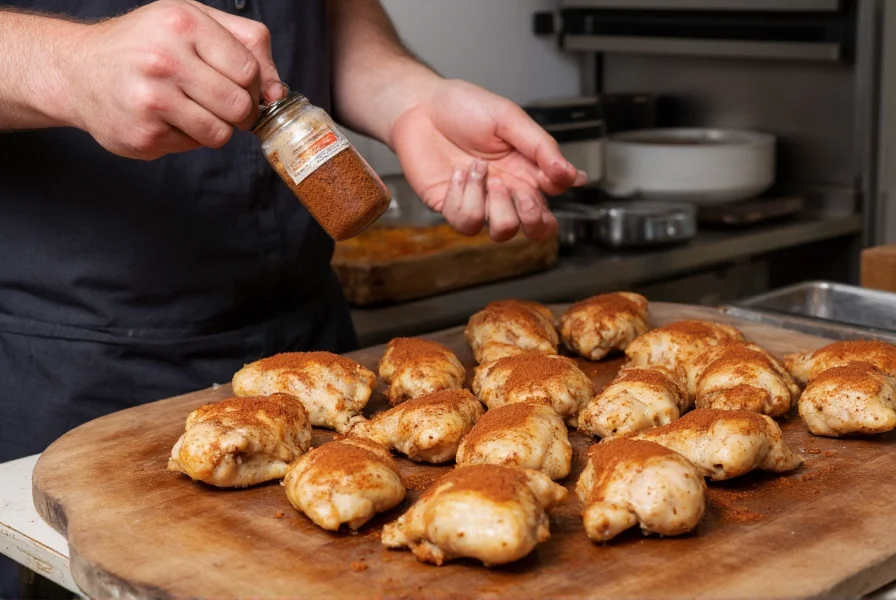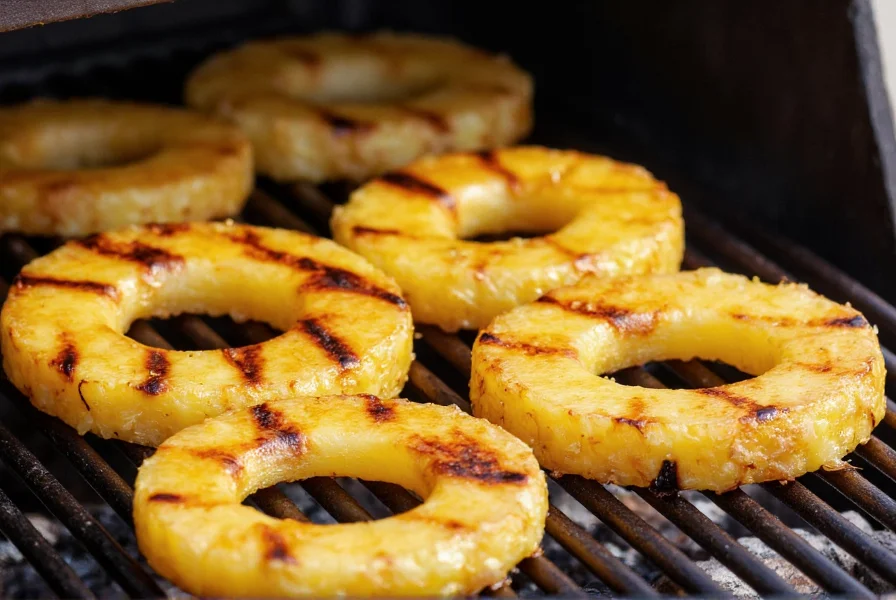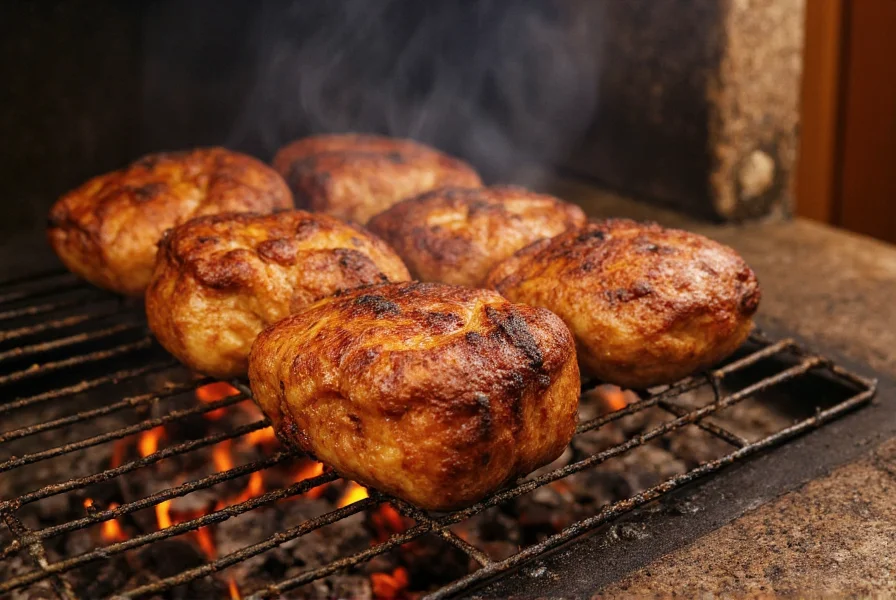Understanding how to properly implement cinnamon in grilling transforms ordinary dishes into extraordinary culinary experiences. This versatile spice works exceptionally well with proteins like chicken, pork, and lamb, while also elevating grilled fruits such as peaches, pineapples, and bananas. The key lies in understanding cinnamon's chemical properties when exposed to high heat and knowing how to balance its intensity with complementary ingredients.
The Science Behind Cinnamon and Grilling
Cinnamon contains cinnamaldehyde, the compound responsible for its distinctive flavor and aroma. When exposed to grill temperatures between 300-400°F (149-204°C), this compound undergoes partial caramelization, creating deeper, more complex flavor notes. Unlike many delicate herbs that burn easily, cinnamon maintains its integrity under direct heat, making it ideal for grilling applications.
Two primary cinnamon varieties work well for grilling:
| Cinnamon Type | Flavor Profile | Best Grilling Applications |
|---|---|---|
| Ceylon Cinnamon | Milder, sweeter, complex citrus notes | Fish, vegetables, fruit desserts |
| Cassia Cinnamon | Bolder, more intense, slightly spicy | Red meats, robust marinades, spice rubs |
Effective Cinnamon Grill Techniques
Professional chefs employ several proven methods to maximize cinnamon's potential on the grill:
Dry Rub Formulations
Create balanced spice blends where cinnamon comprises 15-20% of the total spice mixture. Combine with complementary spices like smoked paprika, garlic powder, and a touch of cayenne for depth. Apply generously to proteins 30-60 minutes before grilling to allow flavor penetration without overwhelming the dish.

Marinade Integration
For optimal flavor infusion, incorporate ground cinnamon into oil-based marinades with acidic components like citrus juice or vinegar. The fat content helps carry cinnamon's oil-soluble compounds into the food, while the acid helps break down proteins for better absorption. Marinate meats for 2-4 hours for chicken or pork, or 30-60 minutes for fish.
Whole Cinnamon Applications
Place whole cinnamon sticks directly on hot coals or in a smoker box to create aromatic smoke that infuses food with subtle cinnamon notes. This technique works particularly well for slow-grilled items like pork shoulder or whole chickens. Alternatively, thread cinnamon sticks onto skewers with meats and vegetables for kebabs.
Perfect Flavor Pairings for Cinnamon Grilling
Certain ingredients naturally complement cinnamon's flavor profile when grilled:
- Fruits: Pineapple, peaches, bananas, and apples develop incredible caramelized sweetness when grilled with cinnamon
- Proteins: Chicken thighs, pork tenderloin, and lamb chops absorb cinnamon's warmth beautifully
- Vegetables: Sweet potatoes, butternut squash, and red onions gain complexity with cinnamon applications
- Complementary Spices: Allspice, nutmeg, cloves, and cardamom create harmonious spice blends
Three Essential Cinnamon Grill Recipes
Cinnamon-Grilled Chicken with Mango Salsa
Combine 2 tablespoons ground cinnamon, 1 tablespoon smoked paprika, 1 teaspoon garlic powder, 1 teaspoon salt, and ½ teaspoon cayenne. Rub onto 4 chicken thighs and grill over medium heat for 6-7 minutes per side. Serve with fresh mango salsa featuring diced mango, red onion, cilantro, and lime juice.
Spiced Cinnamon Grilled Pineapple
Prepare a simple syrup with ½ cup water, ¼ cup honey, and 1 tablespoon cinnamon. Brush onto pineapple rings and grill for 2-3 minutes per side until caramelized. Excellent as a side dish or dessert, particularly with grilled meats.

Cinnamon-Smoked Pork Tenderloin
Create a dry rub with 1 tablespoon cinnamon, 2 tablespoons brown sugar, 1 tablespoon coffee grounds, 1 teaspoon garlic powder, and 1 teaspoon salt. Apply to pork tenderloin and smoke at 225°F (107°C) with additional cinnamon sticks in the smoker box until internal temperature reaches 145°F (63°C).
Avoiding Common Cinnamon Grilling Mistakes
Many home cooks encounter issues when first experimenting with cinnamon on the grill. Understanding these pitfalls ensures better results:
- Overuse: Cinnamon easily dominates other flavors—use sparingly, starting with ½ to 1 teaspoon per pound of meat
- Burning: Cinnamon sugars can burn quickly—apply sweet cinnamon mixtures during the last few minutes of grilling
- Imbalance: Counterbalance cinnamon's sweetness with acidic elements like citrus or vinegar
- Incorrect Type: Using the wrong cinnamon variety for the application—Ceylon for delicate dishes, Cassia for robust applications
Storage and Freshness Tips
For optimal grilling results, proper cinnamon storage matters. Ground cinnamon loses potency within 6 months, while whole sticks maintain freshness for 2-3 years. Store in airtight containers away from heat and light. Test freshness by rubbing a small amount between your fingers—if the aroma is weak, it's time to replace your supply. Fresh cinnamon should have a strong, sweet, woody fragrance that intensifies when warmed.
Conclusion
Mastering cinnamon grill techniques opens up a world of flavor possibilities that elevate everyday grilling. By understanding the proper applications, ratios, and complementary ingredients, home chefs can create restaurant-quality dishes with this accessible spice. The key lies in balance—using cinnamon to enhance rather than dominate the natural flavors of grilled foods. Whether preparing savory main courses or sweet dessert applications, cinnamon's versatility makes it an invaluable addition to any grilling repertoire.
Frequently Asked Questions
Can I use cinnamon sticks directly on the grill?
Yes, placing whole cinnamon sticks directly on hot coals creates aromatic smoke that infuses food with subtle cinnamon flavor. Alternatively, add them to a smoker box for gas grills. This technique works particularly well for slow-grilled items like pork shoulder or whole chickens, providing a gentle cinnamon essence without overwhelming the dish.
What's the difference between using Ceylon and Cassia cinnamon for grilling?
Ceylon cinnamon offers a milder, sweeter flavor with citrus notes, making it ideal for delicate applications like fish, vegetables, and fruit desserts. Cassia cinnamon provides a stronger, more intense flavor that works better with robust proteins like red meats and in spice rubs. For most grilling applications, Cassia is preferred due to its stronger presence that withstands high heat.
How can I prevent cinnamon sugar from burning on the grill?
Apply cinnamon sugar mixtures during the last 2-3 minutes of grilling to prevent burning. Alternatively, create a barrier by first grilling the food without the sweet mixture, then applying the cinnamon sugar and moving to a cooler part of the grill. Using indirect heat for the final caramelization stage also helps achieve perfect results without charring.
Which fruits work best with cinnamon when grilling?
Pineapple, peaches, bananas, and apples produce exceptional results when grilled with cinnamon. These fruits contain natural sugars that caramelize beautifully with cinnamon's warmth. Cut fruits into thick slices or wedges, brush with a light cinnamon-honey mixture, and grill for 2-4 minutes per side until grill marks appear and sugars begin caramelizing.
How much cinnamon should I use in a dry rub for grilling?
For balanced flavor, use cinnamon as 15-20% of your total spice mixture in dry rubs. For a standard rub for 4 servings of meat, this translates to approximately 1-2 teaspoons of ground cinnamon. Start with smaller amounts and adjust to taste, as cinnamon can easily dominate other flavors when used excessively. Always mix cinnamon thoroughly with other spices before application.











 浙公网安备
33010002000092号
浙公网安备
33010002000092号 浙B2-20120091-4
浙B2-20120091-4